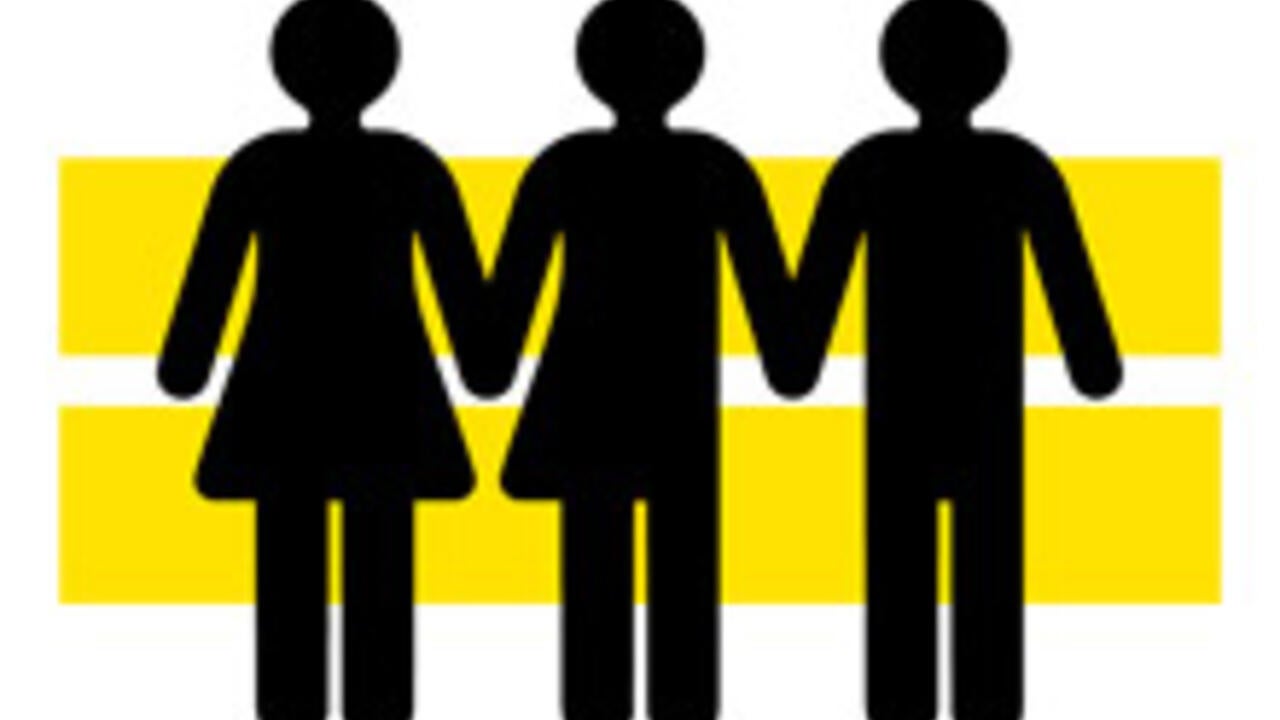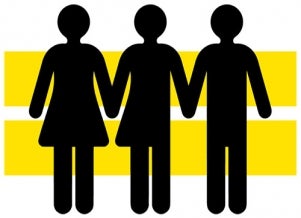
Sex Symbol: Student questions binary thinking on gender
Fine arts student shares her adaptation of symbols to get us talking about gender-based violence

Fine arts student shares her adaptation of symbols to get us talking about gender-based violence
By Megan Hood Faculty of ArtsAs part of the University of Waterloo’s 16 Days of Activism Against Gender-Based Violence, Madeline Samms has created a design that uses the gender-neutral symbol as a way to spark conversations on campus.
 In her piece called Sex Symbol, the Waterloo student has taken the two traditional symbols that denote male or female on public signs and added the gender-neutral symbol holding hands.
In her piece called Sex Symbol, the Waterloo student has taken the two traditional symbols that denote male or female on public signs and added the gender-neutral symbol holding hands.
“We have grown accustomed to a binary way of thinking about gender and it’s important to challenge that,” says Samms, a fine arts and theatre and performance student. “Sex Symbol is an attempt to create a symbol that shows gender equality and fluidity. All genders are not represented in the symbol, but it indicates the spectrum of gender identities.”
 Samms has installed her design at a different site on each day of the 16 Days of Activism. To further the discussion, she has also asked members of the campus community to interact with and respond to the piece during her event, Questioning Symbols.
Samms has installed her design at a different site on each day of the 16 Days of Activism. To further the discussion, she has also asked members of the campus community to interact with and respond to the piece during her event, Questioning Symbols.
“My hope is to promote a campus community that is educated on gender issues and unified in the fight against gender-based violence,” says Samms.
“Having the symbols in bathrooms on campus is really interesting and progressive,” says Kayla Snyder, of the Student Success Office. “There are everyday spaces that we take for granted, that can be very fraught for individuals who don’t identify with the gender binary. This really forces people to have that conversation.”
Legal studies student Aleks Bahdanovich said the piece captured the fluidity of gender. “There is no wrong place on the spectrum, and regardless of how we identify, we're all equally human.”
The University of Waterloo’s 16 Days campaign is led by the Women’s Studies program. As a United Nations initiative, 16 Days of Activism Against Gender-Based Violence strives to bring attention to issues of racism, sexism, cultures of violence, and homophobia. It calls for the implementation of human rights obligations for all, including the right to healthcare, reproductive rights, and an end to militarism and gender-based violence.
For Samms, activism begins with challenging gender identity norms. “From the day we are born, we are categorized and expected to follow gender norms,” she explains. “Because of the expectation that everyone will fall neatly into one of these two categories, most public spaces, including this campus, are not inclusive of all gender identities."
The Glow Centre for Sexual and Gender Diversity at the University posts a map that indicates where gender-neutral restrooms are on campus.

Read more
A winter holiday message from President Vivek Goel

Read more
Researchers awarded funding to investigate ecology, climate change, repatriation, health and well-being through cultural and historical lens

Read more
Shop Canadian this holiday season with festive porch plants, fashion-forward apparel, craft spirits and more from Waterloo entrepreneurs
The University of Waterloo acknowledges that much of our work takes place on the traditional territory of the Neutral, Anishinaabeg, and Haudenosaunee peoples. Our main campus is situated on the Haldimand Tract, the land granted to the Six Nations that includes six miles on each side of the Grand River. Our active work toward reconciliation takes place across our campuses through research, learning, teaching, and community building, and is co-ordinated within the Office of Indigenous Relations.